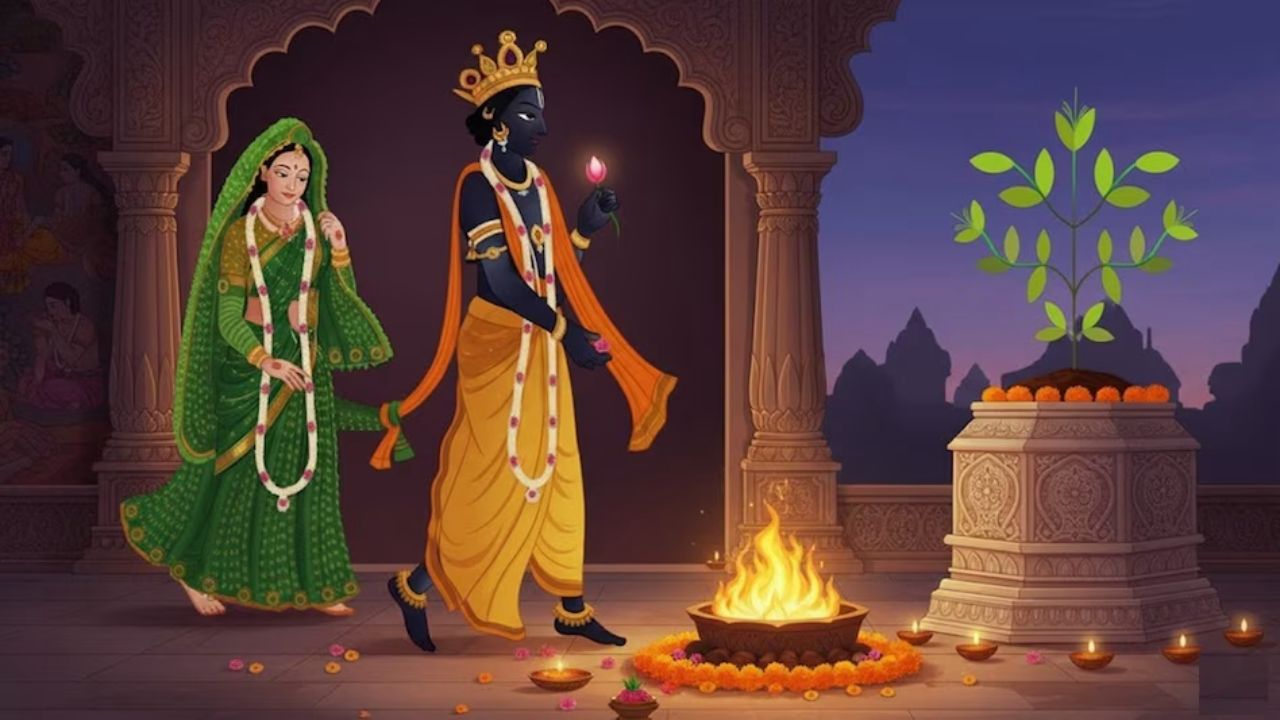 English
English

Tulsi Vivah 2025 marks the divine marriage of Goddess Tulsi and Lord Shaligram, symbolizing purity and new beginnings. Know the exact date, puja timings, and rituals of this auspicious festival that ushers in the Hindu wedding season.

Tulsi Vivah Date and Time
New Delhi: Tulsi Vivah, a sacred Hindu festival that marks the divine marriage of Goddess Tulsi (the holy basil plant) and Lord Shaligram (an incarnation of Lord Vishnu), holds immense spiritual importance for devotees across India. This auspicious occasion is celebrated with great devotion and traditional rituals, symbolizing the beginning of the Hindu wedding season.
This year, Tulsi Vivah will be observed on Sunday, November 2, 2025.
According to the Hindu calendar, the festival falls on Kartik Dwadashi, which is the twelfth day of the bright fortnight (Shukla Paksha) of the Kartik month.
Dev Uthani Ekadashi 2025: On November 1 or 2? Lord Vishnu awakes and blessings begin
Devotees are advised to perform the Tulsi Vivah rituals during the Dwadashi Tithi for maximum spiritual benefit.
Tulsi Vivah marks the symbolic end of the monsoon and the beginning of the auspicious period for Hindu marriages. The ceremony signifies the divine union of Goddess Tulsi (believed to be an incarnation of Goddess Lakshmi) and Lord Shaligram, representing Lord Vishnu.
It is believed that observing this festival and performing the rituals with devotion brings peace, prosperity, and happiness in life. For married couples, it strengthens the bond of love and mutual respect, while for unmarried girls, it is said to bless them with a suitable life partner.
The festival also holds agricultural and seasonal significance, as it marks the start of the traditional wedding season and the onset of a spiritually vibrant time in the Hindu calendar.
The Tulsi Vivah ceremony is usually performed either at home or in temples, where devotees decorate the Tulsi plant and Lord Shaligram in a traditional wedding setup.
Notably, rice is not offered during this puja. Instead, sesame seeds or white sandalwood are used as sacred offerings to Lord Shaligram.
Dev Uthani Ekadashi 2025: Date, significance, puja muhurat and rituals explained
Worshipping Goddess Tulsi on this day is believed to invoke the blessings of Lord Vishnu and Goddess Lakshmi. Devotees observe fasting and engage in prayers seeking harmony and prosperity in their households.
The festival emphasizes the spiritual message of devotion, purity, and divine love, reminding devotees of the eternal bond between the human soul and the divine.
As Tulsi Vivah ushers in the season of auspicious beginnings, homes and temples across the country come alive with devotion, rituals, and festive joy—celebrating not just a divine union, but the spirit of faith and togetherness that defines Indian tradition.